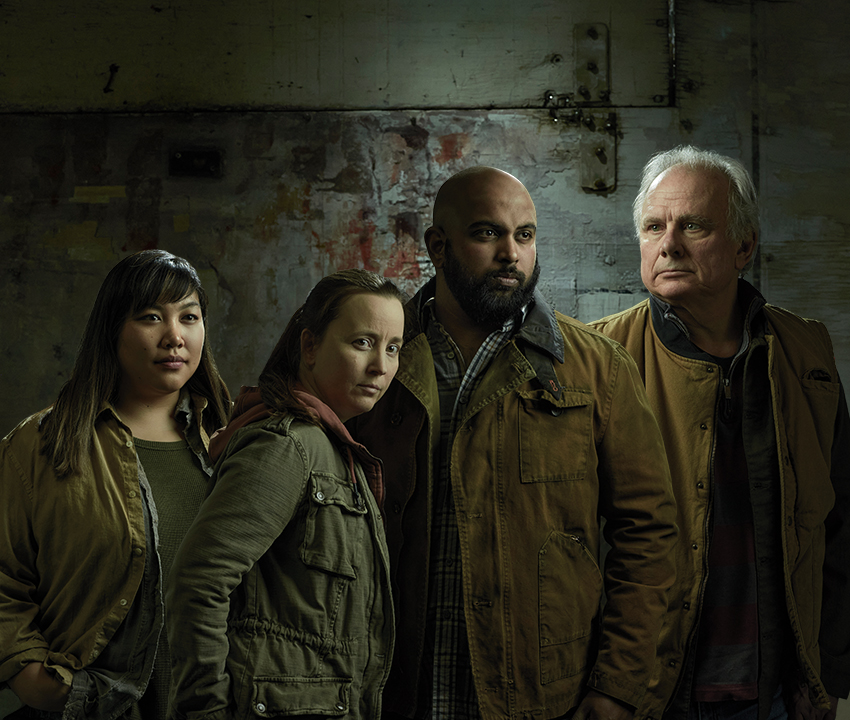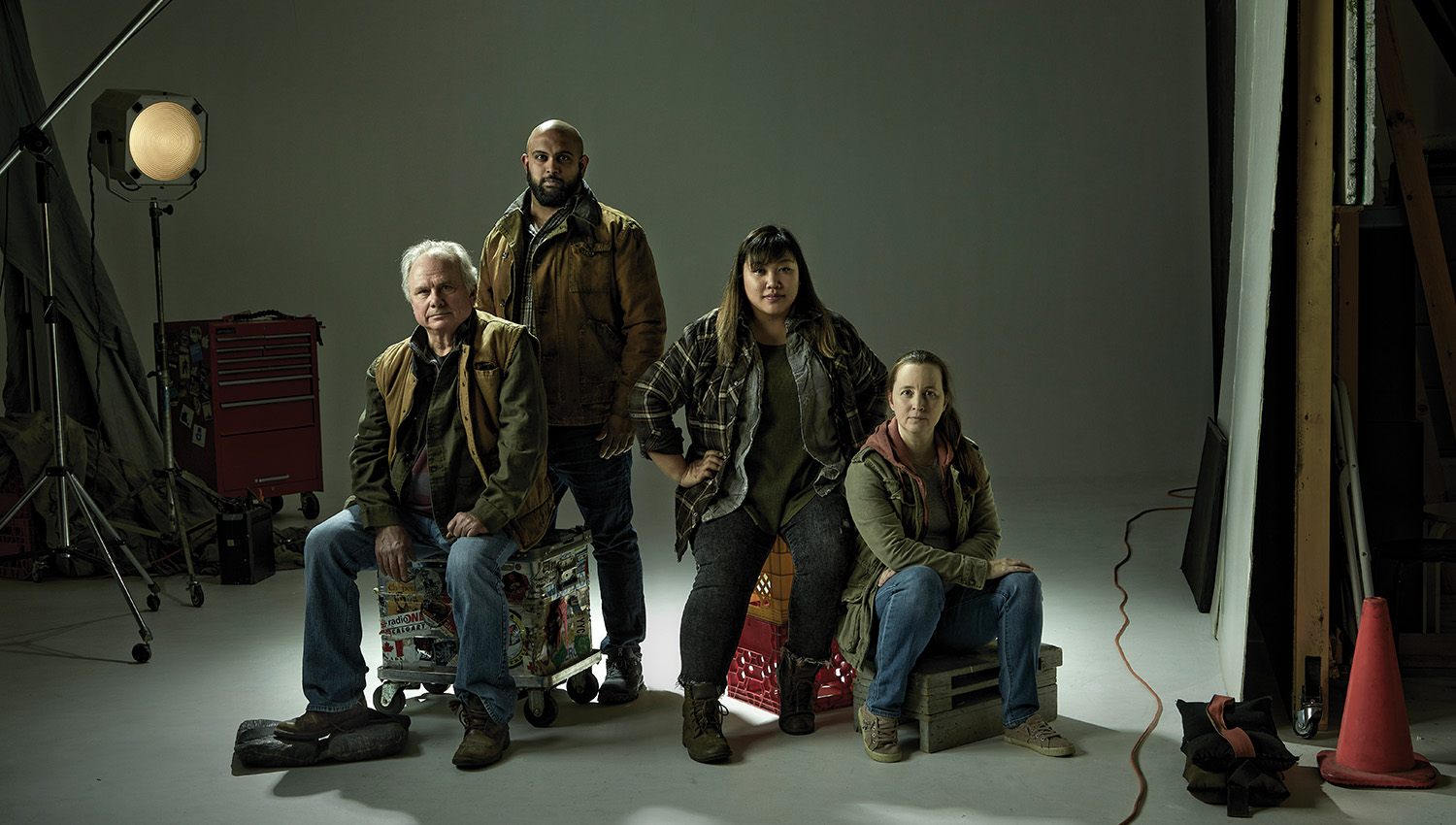
JANUARY 15, 2023. It's a Sunday night, and I'm settling into my comfy spot on the couch; the remote nearby, snacks and beverage in hand, and a blanket to shield my eyes from impending jump scares.
Like countless Albertans and video game fans worldwide, I'm about to watch the premiere of HBO’s The Last of Us (TLOU) - a TV series set in a post-apocalyptic America, adapted from the action-adventure video game, and filmed on locations province-wide.
Some might be watching for vaguely familiar backdrops - including several on SAIT's campus. But I'm watching because, in the words of Film and Video Production instructor, Jason Long, "There isn’t a project shooting here that doesn’t have several SAIT alumni on either the crew side or in post-production. It's common to walk on set and meet at least three to six grads."
As anticipation began growing around TLOU, so did my list of alumni involved in the year-long production: I know of at least 20 graduates working in skilled roles ranging from camera crews, video editors and sound engineers to accountants, agents and set carpenters.
So I set out on a side-quest of my own, wanting to hear more and living vicariously through their experiences.
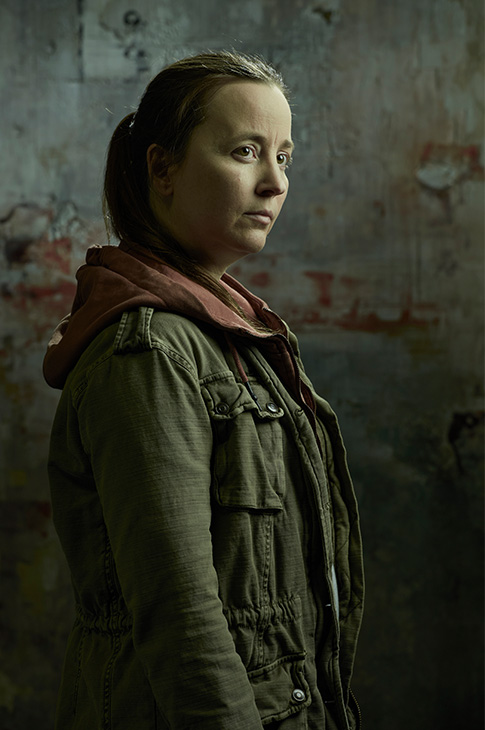
A stand-in's reveal
First on my list was Christina Riches (pictured right), a 1998 Business Administration (BA) graduate, a colleague, an actor and a longtime friend.
Riches was the stand-in for Bella Ramsey, who plays TLOU protagonist Ellie Williams.
Although Riches didn’t have as many opportunities to talk with Ramsey as you might expect - stand-ins are actors who are part of the crew, not part of the cast — her role in the production was vital in helping fellow crew members prepare to shoot.
"Either Bella was on set, or I was," Riches explains. "One of us was always working. After rehearsals and between set ups, the floor would be given to the crew. That’s when I would step in and rehearse the scene as Bella did it, as precisely as possible. It helped the camera operators practice how they would move through the set with the character in place. It also allowed lighting and sound technicians, grips and set decorators to get things just right.
"At the same time, the actors would be having their hair and makeup touched up, chatting with the director about how a scene was progressing, or taking a break. Once the crew was ready to shoot, I would update Bella on blocking changes, then move offset and watch the monitors until I was needed again."
The care of a critical eye
Also watching the monitors with a critical eye was Assistant Script Supervisor Ben Saracini, a 2019 graduate of the Film and Video Production program (FVP). A detailed note maker, he paid close attention to the actors, dialogue, props, time, eyeline, wardrobe and action scenes to ensure they all matched the script. If a single detail was out of order, he worked to correct it.
"I’d take notes about technical information like the lens size used in each shot, how long each take was, which take the director liked, and so on," says Saracini. "Then I’d help the editors manage continuity by leaving notes about details they might want to look out for in post-production.
"Say we do six takes of a scene and, on take three, the actor picked something up using the opposite hand to the one they had used in previous takes. My job is to make a note for the editors so they can cut around that," he explains.
However, despite all the notes and attention to detail, continuity can still be sacrificed in the editing room.
"Editors will always pick the best performance over takes with the best continuity," shares Saracini. "I just remind myself that, when I see a continuity error in a show, it’s likely not because of an oversight of the script supervisor but rather a choice for a better performance."
Sound — it's a balancing act
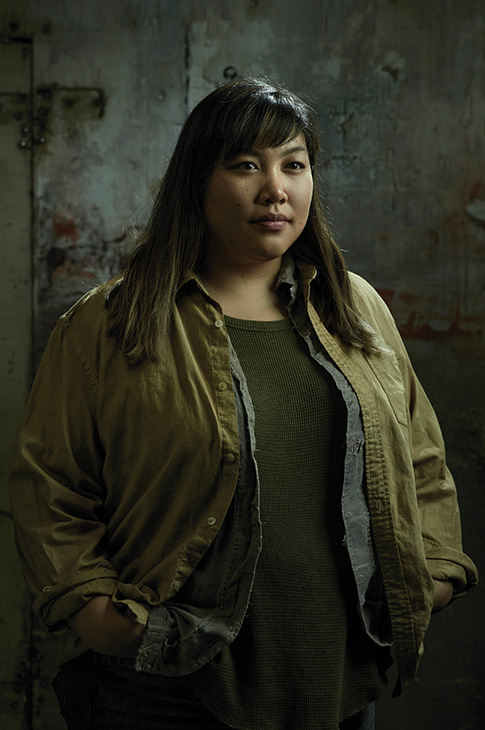
It’s that marriage of technical skill and creativity that appeals to Val Siu (pictured right; FVP ’10, BA ’08), who has worked in the entertainment industry for nearly 13 years. Her role on TLOU was Utility Sound Technician, working alongside the mixer and the boom operator.
"The mixer records and controls the sound levels that we harvest to get the right mix, while the boom operator handles the big overhead microphone," Siu says, explaining that harvesting sound includes recording actors’ voices and ambient noises like the wind blowing through trees.
"Other tasks involving the on-set sound department usually fall into my realm - I would help unload and set up sound equipment, mic up the actors, and take care of communications on set by providing headsets so everyone could hear the scene being shot.
"I also did something called ‘jam sync’ to ensure both camera and sound were operating on simultaneous time codes, which helps sync up the audio and video in post-production.
"Sometimes I would take the time to just walk around a set because that’s not an opportunity many people get," Siu reflects. "Everyone is hyper-focused in their detailed jobs and, when you sit down and watch the results, you get a new appreciation for all the work that goes into making two hours of entertainment."

Shepherding the visual effects pipeline
Umesh Thamotharam (pictured left; FVP ’21) would agree. Although he’s always loved watching movies, he says he’d never really thought about actual people working to create what he saw on the screen. Then, in 2018, a friend asked him to go to SAIT’s Open House.
"I said ‘yes,’ thinking I was going for the heck of it," Thamotharam says. "But I saw a display for the Film and Video program and was excited to see it was an option.
"I had always thought Vancouver or Toronto were the only choices in Canada for film school. I applied and I haven’t looked back since."
After completing a contract as a Visual Effects Production Assistant (VFX PA) on Prey (the prequel to the first four films of the Predator franchise), Thamotharam learned of an opportunity to work on TLOU.
"I found out there would be more second unit shoots and that the TLOU data wranglers would need help acquiring on-set visual data," he says. "Lucky for me, my name was put forward, and I ended up working with the same data wrangler from Prey."
As a VFX PA on TLOU, Thamotharam assisted with gathering in-depth data to be used in post-production and editing for each scene, measuring distances between characters as well as camera height, angle tilts and changes in focus. He would also take reference photos for the post-production team to use, especially when computer-generated imagery (CGI) was involved.
Taking time to take it all in
When Jessica Rovansek (FVP ’19) began her job as a dailies operator, she was mostly excited just to be working for HBO.
"It wasn’t until halfway through production, when news articles started comparing TLOU with Game of Thrones, that it hit me - this was the biggest show to come to Canada, ever," she says.
Rovansek’s role was to label and upload the day’s footage from digital cameras and audio recorders, ensuring the files were properly safeguarded. After slight colour touch-ups, she would export and send the dailies to TLOU editors.
"When production ended, I remember sitting with a co-worker and saying, ‘Yeah, we did The Last of Us’," Rovansek says with a smile. "I think it’ll hit me again when I see the finished show — when it has colour, sound and the whole story together."
Bringing movie magic to Alberta
That sense of excitement is reflected throughout Alberta’s booming film industry. From the Calgary Film Centre’s world-class facilities; to the provincial government’s elimination of per-production caps and increased investment in the film tax credit; to this city’s outstanding talent pool of creative and film industry professionals - it’s no wonder companies like Universal, Disney, MGM and Warner Bros. Discovery are shooting here.
And that’s also keeping Tom Benz (pictured right; CTSF, TSR '81) extremely busy.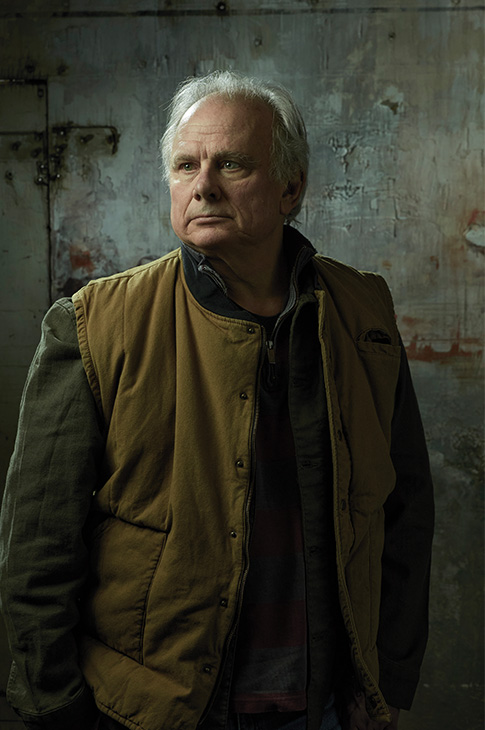
As a Motion Picture Business Agent with the International Alliance of Theatrical Stage Employees (IATSE) 212, Benz does more than promote the magical light on the eastern side of the Rockies and the vast filming opportunities in Alberta’s varied landscapes. He also advocates for local crew members, considered among the best in the world.
"I negotiate, and enforce, the IATSE 212 Motion Picture Collective Agreement with studios and producers in an effort to have IATSE 212 members hired onto these projects," he says. "For TLOU, more than 1,200 individuals were employed between one day and 16 months.
"When I started in the 1970s, there was no digital technology, budgets were smaller and there was no infrastructure. But the goal has always been to produce a film that is greater than the sum of individual contributions. Every person counts on every project."
As I watch TLOU, I’m in awe of the attention to detail, both on and off the screen. While faithful to the original storyline, this adaptation adds backstories to various characters, demonstrating its ability to stand alone as a compelling TV series.
It's been such as success that, within days of the second episode screening, HBO announced on Instagram, "The journey continues. #TheLastOfUs will return for another season on @HBOMax."
In season two of TLOU, the story shifts to a Pacific Northwest location and, as LINK went to press, HBO confirmed that most of the season will be filmed in Vancouver
I’ll join other TLOU fans in hoping to see the return of some familiar faces and more familiar places - and I’ll be watching the credits, expecting to see many SAIT alumni also continuing the journey.
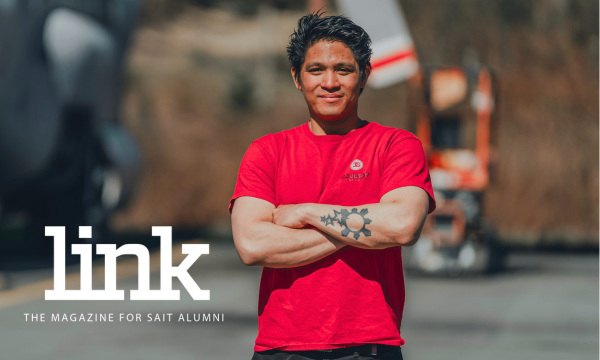
Like what you are reading?
Find more stories from past, present and upcoming issues of LINK magazine!
Oki, Âba wathtech, Danit'ada, Tawnshi, Hello.
SAIT is located on the traditional territories of the Niitsitapi (Blackfoot) and the people of Treaty 7 which includes the Siksika, the Piikani, the Kainai, the Tsuut’ina and the Îyârhe Nakoda of Bearspaw, Chiniki and Goodstoney.
We are situated in an area the Blackfoot tribes traditionally called Moh’kinsstis, where the Bow River meets the Elbow River. We now call it the city of Calgary, which is also home to the Métis Nation of Alberta.
